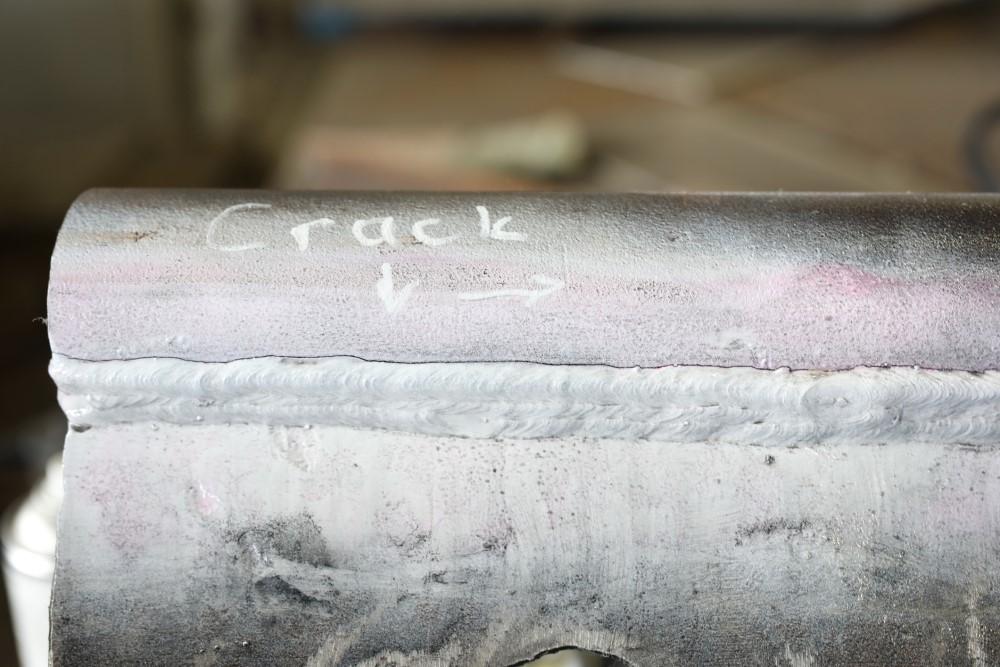Exactly How to Avoid Weld Undercut: Crucial Tips for Welders
Exactly How to Avoid Weld Undercut: Crucial Tips for Welders
Blog Article
Grasping the Art of Welding: Just How to Prevent Undercut Welding Issues for Flawless Fabrication Outcomes
By understanding the origin triggers of undercut welding and applying effective techniques to avoid it, welders can raise their craft to new degrees of excellence. In the search of remarkable manufacture results, grasping the art of welding to avoid undercut issues is not just an ability yet a necessity for those striving for perfection in their job.
Comprehending Undercut Welding

To prevent undercut welding, welders should make certain correct welding parameters, such as adjusting the existing, voltage, travel rate, and keeping the appropriate electrode angle. By recognizing the causes of undercut welding and implementing precautionary steps, welders can achieve high-quality, structurally audio welds.
Root Causes Of Undercut in Welding
Understanding the factors that add to damage in welding is vital for welders to create premium, structurally audio welds. When the weld metal does not appropriately load the groove developed in between the base metal and the formerly transferred weld metal, damaging takes place. A number of variables can cause undercut in welding. One typical cause is too much warmth input. Welding at high temperatures for prolonged periods can result in the base steel thawing greater than desired, leading to undercut. Inadequate welding incorrect or present welding speed can additionally contribute to undercut. Insufficient current may not provide enough warmth to thaw the base and filler steels sufficiently, while excessive speed can avoid proper combination, triggering undercut. Furthermore, inappropriate electrode angles or wrong torch adjustment techniques can produce locations of reduced weld steel deposition, promoting undercut. Recognizing these causes and applying appropriate welding techniques can assist stop damaging concerns, making certain solid and resilient welds.
Methods to stop Undercutting

To mitigate the threat of undercutting in welding, welders can utilize strategic welding strategies aimed at improving the high quality and stability of the weld joints. In addition, using the proper welding method for the specific joint arrangement, such as weave or stringer grains, can contribute to decreasing undercutting.
Employing back-step welding strategies and he has a good point managing the weld grain account can likewise help disperse heat equally and reduce the threat of undercut. Regular inspection of the weld joint throughout and after welding, as well as executing high quality guarantee steps, can aid in dealing with and spotting undercutting problems promptly.
Importance of Proper Welding Specifications
Picking and preserving suitable welding parameters is crucial for accomplishing effective welds with marginal flaws. Welding specifications refer to variables such as voltage, current, travel speed, electrode angle, and shielding gas circulation rate that directly affect the welding procedure. These parameters need to be meticulously changed based on the type of material being welded, its thickness, and the welding technique used.
Appropriate welding parameters make sure the right quantity of warmth is related to melt the base metals and filler material consistently. If the parameters are established expensive, it can bring about extreme useful source warmth input, causing burn-through, spatter, or distortion. On the various other hand, if the parameters are too low, insufficient fusion, absence of infiltration, or undercutting might occur.
Quality Control in Welding Procedures

Verdict
To conclude, understanding the art of welding needs a comprehensive understanding of undercut welding, its causes, and strategies to stop it. By guaranteeing proper welding criteria and implementing top quality guarantee techniques, flawless construction results can be achieved. It is important for welders to constantly strive for quality in their welding procedures to stay clear of undercut problems and create top notch welds.
Undercut welding, a typical problem in welding procedures, happens when the weld metal doesn't properly load the groove and leaves a groove or anxiety along the bonded joint.To prevent undercut welding, welders should guarantee appropriate welding specifications, such as adjusting the present, voltage, travel rate, and maintaining the proper electrode angle. Poor welding present or inaccurate welding rate can also add to damage.To reduce the danger of damaging in welding, welders can utilize calculated welding techniques aimed at enhancing the quality and integrity of the weld joints.In conclusion, mastering the art of welding calls for an extensive understanding of undercut welding, its reasons, and strategies to prevent it.
Report this page